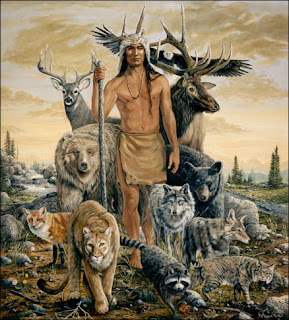Throughout Sheman
Alexie’s stories, there are many references to the crimes committed against
Native Americans by white people in the past. He also alludes to the fact that
Native Americans harm each other even more than white people may harm them in the
present. However, the real root of the problem for Native Americans is the
struggle to live between the two worlds. The characters in the stories, “Every
Little Hurricane” and “This is What it Means to Say Phoenix, Arizona” show the
struggle to not be influenced by the white man’s culture, but still showcase the
desire to belong to something more mainstream than reservation life.
In “Every Little Hurricane”,
the main way in which white culture is emulated is through the drinking of
alcohol which encourages the violence in the story. It is not news to anyone
that white men introduced alcohol consumption to Native Americans and they have
struggled with alcoholism ever since. This is a prime example of how the
characters in the story try to fit into a white man’s world, but it has devastating
consequences. The drunken stupors cause the two brothers to fight each other
and the parents of Victor to pass out ignoring their son. For Victor, and the
reader, this is a symbol of how Native Americans are either destroying each other or
self-destructing. The way Alexie uses weather elements throughout the key
passages about these moments of emotional destruction is tied to the connection
that Native Americans once had with nature. The hurricane comes that night
unnoticed and while the hurricane is not real and is merely a metaphor for the destruction
of these lives caused by living in a cultural state of tug of war, it is
important that they do not see it coming because they are no longer in tune
with nature.
In the other story
mentioned, “This is What it Means to Say Phoenix, Arizona”, the fact that
Thomas Builds-the-Fire is a storyteller is used to further highlight the
struggle for Victor to live in the traditons of his heritage or move forward as
a more modernized man. Story telling is a central part of the rich heritage of
Native Americans. Thomas Builds-the-Fire always tells stories that have a
meaning or moral behind them and because no one wants to cling to that
tradition because they are too busy chasing white modernity, people on the reservation
ignore him. Victor is annoyed by this quality and it has even invoked violence
from him in the past towards Thomas. The act of storytelling is a connection to
the past and the Native American heritage, and Victor admits that not only does he need help
from Thomas, but that he also has a “sudden
need for tradition”. There is a defintire struggle there for Victor as he tries
to reconcile the past he shares with this person who seems more deeply rooted
in the Native American ways whereas Victor seems much more concerned with
getting money and the truck from his dead father. This display of greed or
valuing material objects which is very much associated with white man’s culture
over heritage and family is just another example of the struggle highlighted in
these two stories as Native Americans try to reconcile where they belong with
where they are in American culture.


